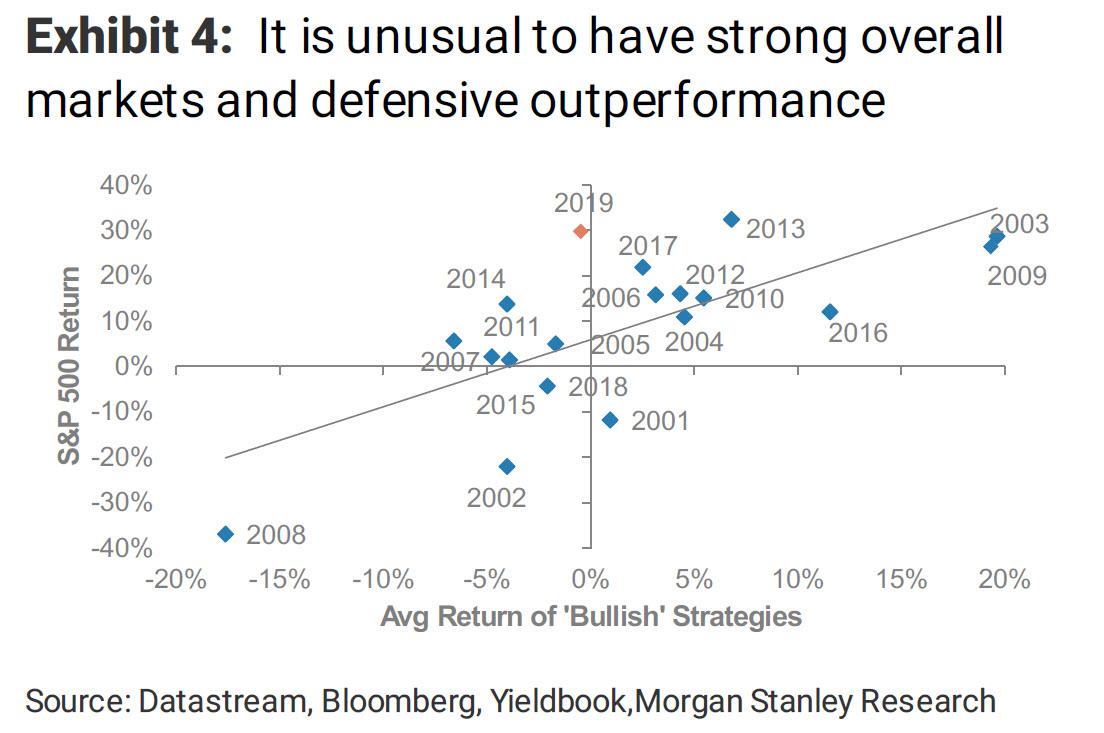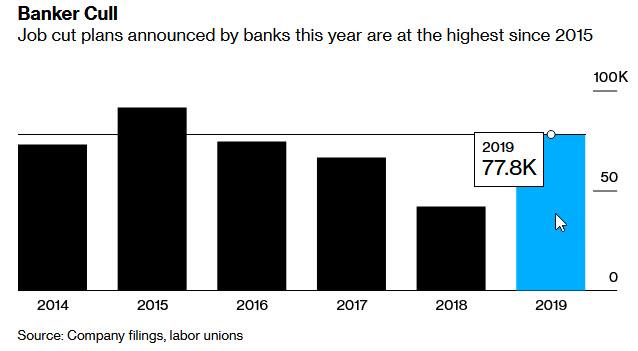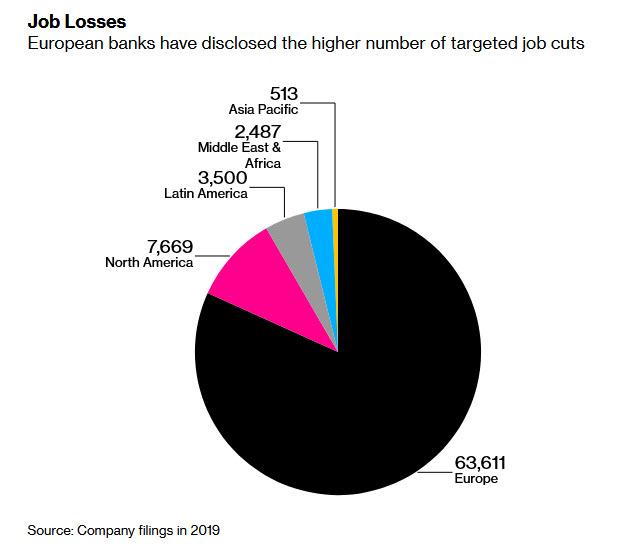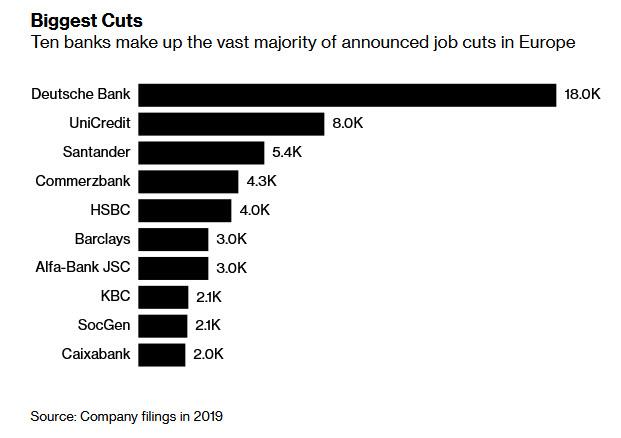Banks Celebrate Record High Stocks With Most Layoffs Since 2015
A few days ago, Morgan Stanley laid out why 2019 was an “unusual”, bizarre year for equity markets, which hit all time highs around the globe even as bullish strategies underperformed, crippling countless hedge funds who failed to get the mix of assets just right and suffered another round of gut-wrenching redemptions which culminated in the longest streak of hedge fund outflows since the financial crisis.
But for the people who brought you this record performance in stocks – namely the world’s traders, bankers, and finance professionals – there is another reason why 2019 was not only perplexing but also painful year: more of them got let go than any other year since 2015!
According to Bloomberg calculations, banks around the world – the institutions that are supposed to benefit the most from rising markets – have unveiled the biggest round of job cuts in four years “as they slash costs to weather a slowing economy and adapt to digital technology.” Wait, did Bloomberg just say “slowing economy?” But… but… S&P at all time highs? Oh wait, we almost forgot: all of the S&P’s upside in 2019 was due to multiple expansion as earnings declined YoY
But we digress: in 2019, more than 50 banks have announced plans to cut a combined 77,780 jobs, the most since 91,448 in 2015…
… with banks in Europe, which have been crushed by the ECB’s catastrophic NIRP policy and face the added burden of negative interest rates for years to come, accounting for almost 82% of the total.
Not surprisingly, there is one bank whose job cuts dwarf everyone else: Germany’s biggest lender – which after nearly failing in 2016 has been disintegrating year after year in the world’s most grotesque restructuring process – tops the list of planned job cuts.
According to Bloomberg, Deutsche Bank “is planning to get rid of 18,000 employees through 2022 as it exits from a big part of its investment banking business.” And by that, Bloomberg means that with Deutsche Bank’s countless market manipulation tricks having been exposed, it no longer needs quite as many deadweight bankers who are unable to rig this or that assets, and are now just a cost-center in a time of pervasive algo trading.
Deutsche Bank’s aggravated disintegration and surging layoffs mean that the 2019 cuts will bring the total for the last six years to more than 425,000, a very distinct middle-finger to the industry that is supposed to benefit the most from the fake all time highs in global stocks. In fact, as Bloomberg correctly points out, the actual amount is probably higher because many banks eliminate staff without disclosing their plans.
To be sure, US banks were also not immune with Morgan Stanley the latest firm to make a year-end efficiency push, cutting about 1,500 jobs, or 2% of the bank’s workforce, as we reported at the start of the month.
But nothing compares to the shitshow in Europe:
This year’s figures also underscore the weakness of European banks as the region’s export-oriented economy confronts international trade disputes while negative interest rates eat further into lending revenue. Unlike in the U.S., where government programs and rising rates helped lenders rebound quickly after the financial crisis, banks in Europe are still struggling to regain their footing. Many are firing staff and selling businesses to shore up profitability.
The irony: even as stocks continue to break records with every passing, banks will continue to announce further layoffs next year. Swiss wealth manager Julius Baer Group is considering cuts to reduce costs because of rising competition and tighter margins, Bloomberg sources reported, while Spain’s Banco Bilbao Vizcaya Argentaria SA plans to cut jobs in its client solutions business and may extend that to its wider business.
As for the US banking sector, it suffered a near-death experience in Sept when the funding rates exploded as the Fed briefly lost control over funding markets. However, some quick thinking by Jamie Dimon, whose JPMorgan had pulled nearly $200 billion in liquidity from repo and money markets earlier in 2019, which forced the Fed to launch QE4, allowed US banks to not only emerge unscathed from the repo crisis but to enjoy record high stock prices which they can now buyback after issuing tens of billions in debt to desperate Japanese pensioners and retirees. After all, there is a reason why Jamie Dimon is “richer than you.“
Tyler Durden
Fri, 12/27/2019 – 10:35
via ZeroHedge News https://ift.tt/2ZtUSbL Tyler Durden



